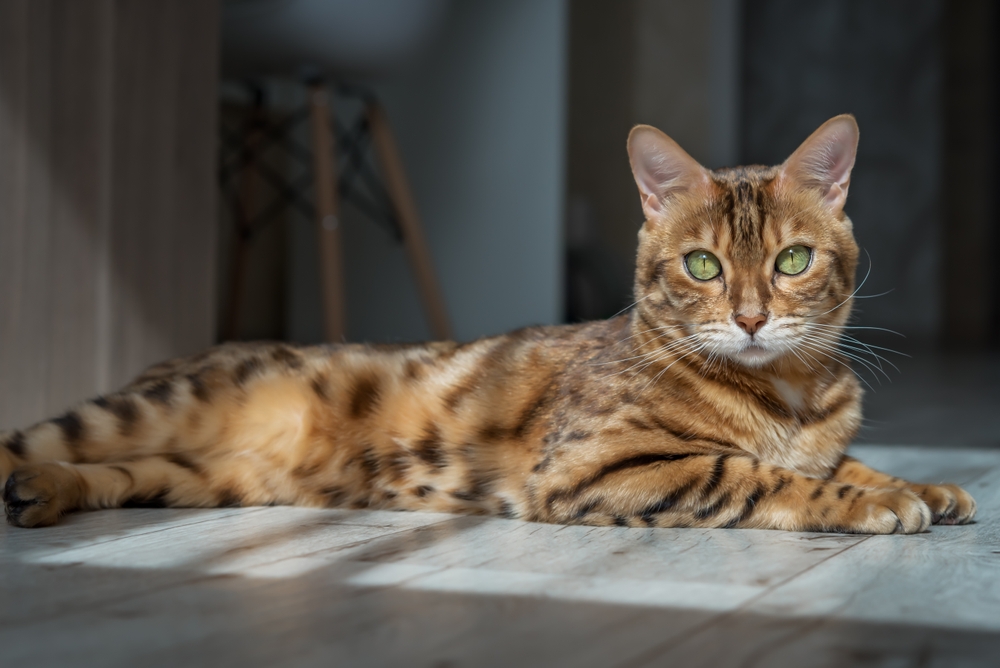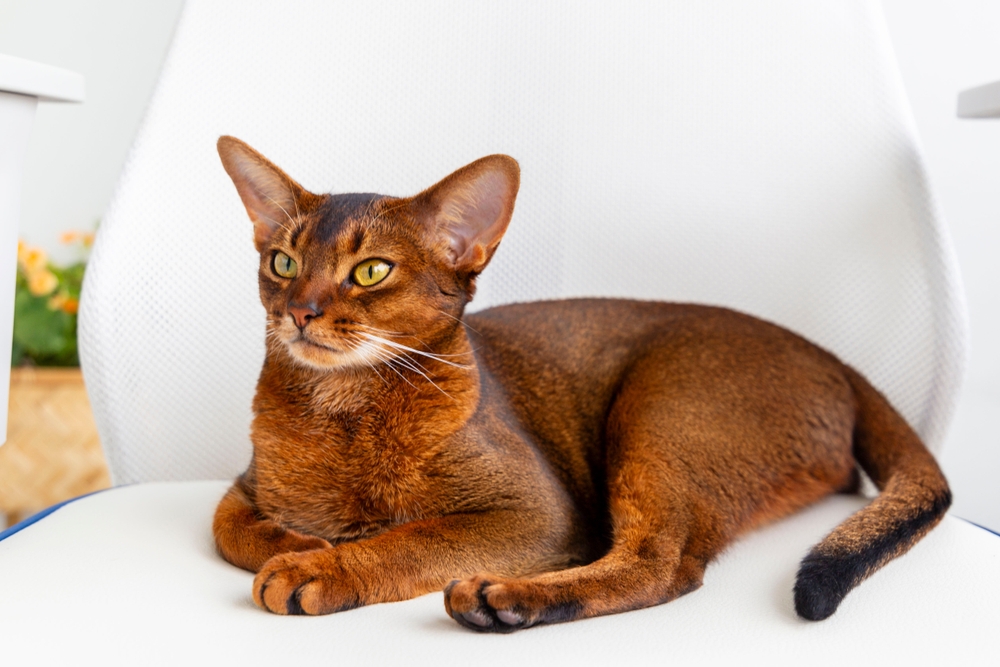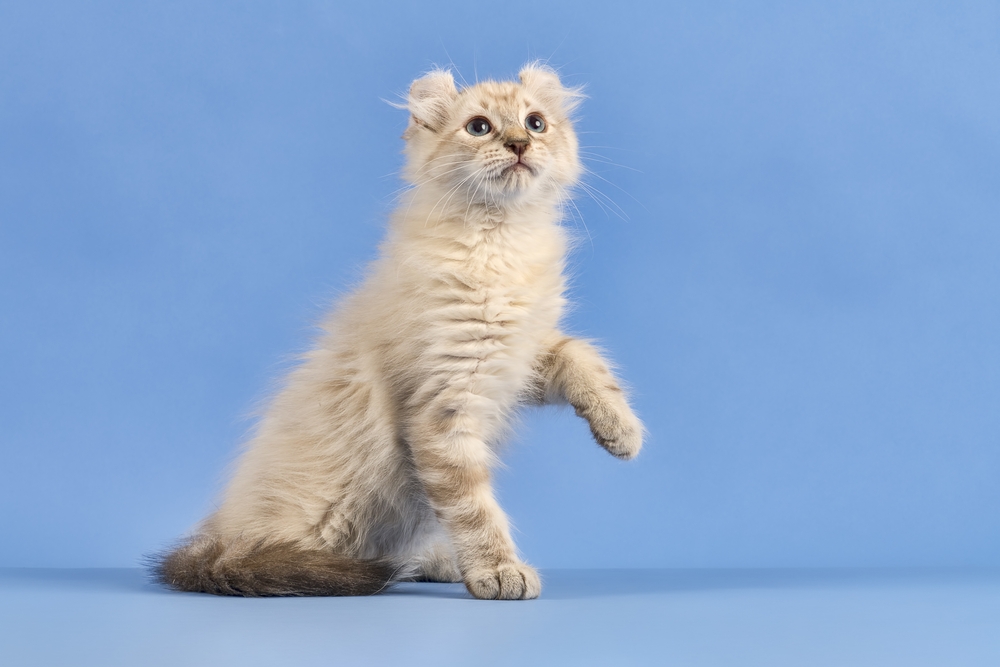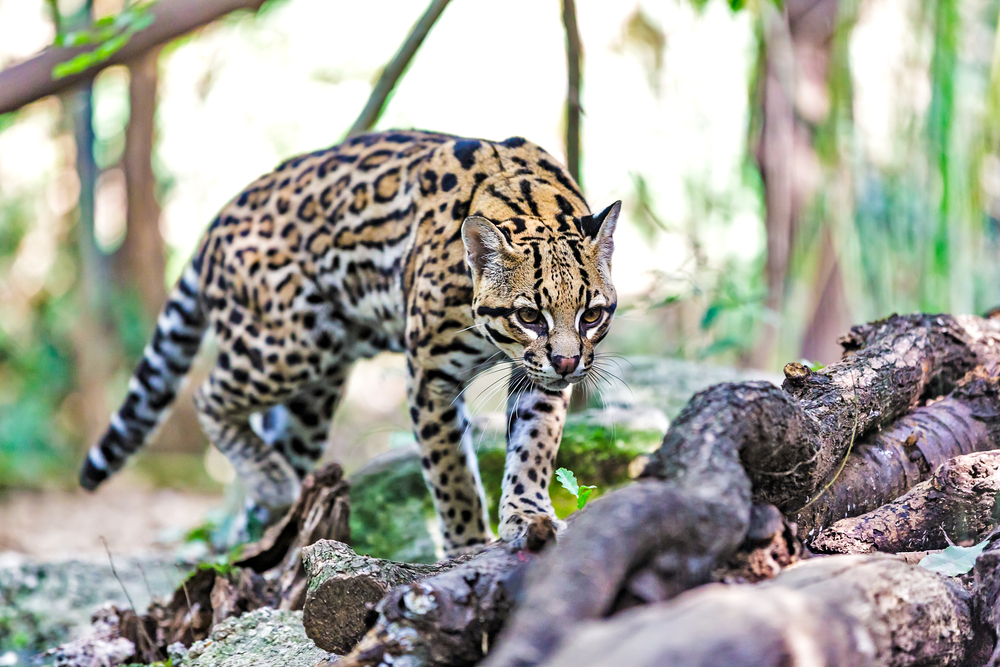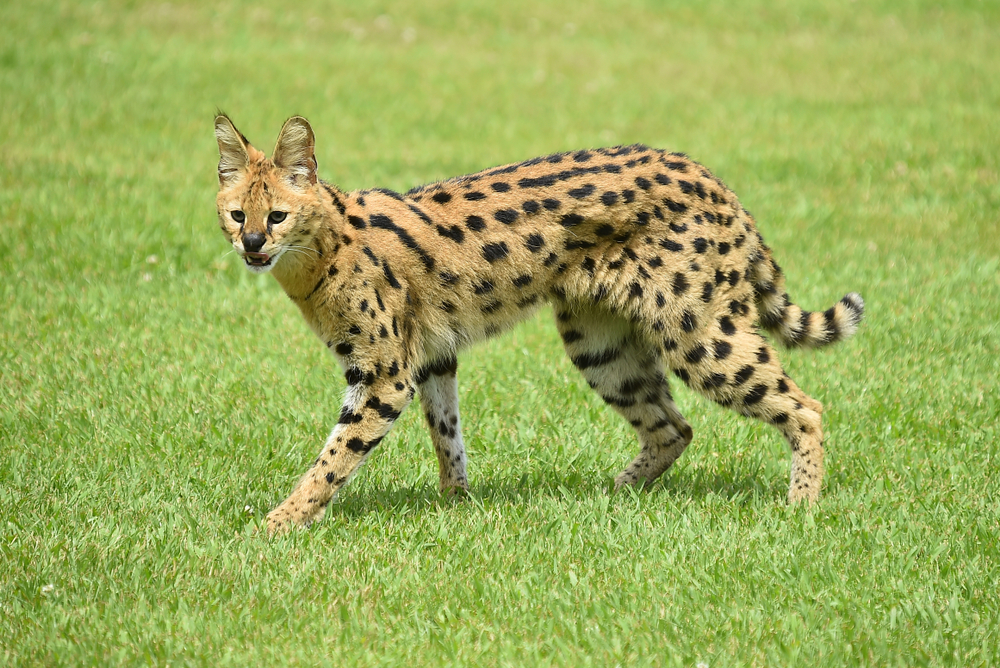The Bengal’s closest wild relative is the Asian leopard cat (Prionailurus bengalensis), which gave the breed its exotic look. Among domestic cats, the Ocicat and Savannah cat share similar spotted or wild-like appearances, but the Bengal is unique in combining a glittered coat with hybrid ancestry.
About
The Bengal cat is a striking domestic breed admired for its wild appearance and energetic personality. Medium to large in size, Bengals are muscular and sleek, with long bodies, strong legs, and a distinctive coat patterned with either spots or marbled swirls. Their coat is short, soft, and often glittered, meaning it sparkles under the light, adding to their exotic beauty. Eye colors vary from gold and green to aqua and blue, depending on coat color.
The Bengal (Felis catus), part of the family Felidae, was developed in the United States in the late 20th century by crossing domestic cats with the Asian leopard cat (Prionailurus bengalensis). The goal was to create a cat with the appearance of a wild feline but the temperament of a companion pet. Through selective breeding, modern Bengals maintain their exotic look while being fully domesticated and affectionate.
Typically weighing 8–15 pounds (3.6–6.8 kg), with males often larger than females, Bengals are extremely active and intelligent. They are known for their playful, dog-like behavior, often learning to fetch, walk on leashes, and even enjoy water. Because of their high energy, they thrive in environments where they can climb, explore, and engage in interactive play. Without stimulation, they may become mischievous.
Bengals are affectionate with their families and often form strong bonds, though they may be reserved with strangers. Their vocal nature, combined with their athleticism and curiosity, makes them engaging companions for households that can keep up with their lively personalities.
With their glittering coats, wild-cat heritage, and boundless energy, the Bengal cat combines the beauty of the jungle with the companionship of a loyal, intelligent pet.
Physical Characteristics
Coat: The Bengal is best known for its luxurious, short to medium-length coat that feels soft and silky, sometimes described as “pelt-like.” It features striking patterns—either spotted (rosetted) or marbled—with colors ranging from brown, snow, and silver to charcoal. Many Bengals have a unique glitter effect, where the coat shimmers in the light.
Face: They have a broad, modified wedge-shaped head with rounded contours. Their eyes are large, oval to almond-shaped, and can be green, gold, or blue (especially in snow varieties). Distinctive dark markings often accentuate their face, including mascara-like lines around the eyes and bold whisker pads.
Body: Bengals are medium to large cats with a strong, muscular, and athletic build. They have long, sleek bodies that are both powerful and agile, reflecting their wildcat ancestry.
Ears: Medium to small, rounded at the tips, and set wide apart. They often have a “thumbprint” marking on the back of the ear, similar to Asian leopard cats.
Tail: Thick and medium in length, tapering to a rounded tip, usually with bold dark rings and a solid black tip.
Size:
-
Length: 14–18 in (36–46 cm) from head to base of tail.
-
Height: 10–12 in (25–30 cm) at the shoulder.
Weight:
-
Adult Female: 8–12 lbs (3.6–5.4 kg).
-
Adult Male: 10–15 lbs (4.5–6.8 kg), with some males reaching up to 18 lbs (8.2 kg).
The Bengal’s exotic coat patterns, glittered sheen, and sleek, muscular physique give it the look of a miniature wild leopard, while maintaining the balance and proportions of a domestic cat.
Reproduction
Mating and Courtship:
Bengal cats typically reach sexual maturity at 6–9 months, though many breeders wait until 12 months or older to ensure proper development before breeding. Females in heat display vocalizations, rolling, and increased affection, while males respond with persistent following and vocal calls.
Breeding Season:
Like most domestic cats, Bengals can breed year-round, though queens may cycle more frequently in spring and summer when daylight hours are longer.
Gestation:
The gestation period lasts about 63–65 days (roughly 9 weeks).
Birth of Kittens:
A typical Bengal litter consists of 3–6 kittens, though litters can be as small as 1 or as large as 7–8. Kittens are usually born in a quiet, secure nesting area selected by the mother.
Care and Nurturing:
Kittens are born weighing 3–4 oz (85–113 g), blind and completely dependent. Bengal queens are attentive mothers, nursing and grooming their young consistently.
Weaning and Social Development:
-
Eyes open around 7–10 days.
-
Kittens begin walking at about 3 weeks.
-
Solid food is introduced by 4–5 weeks, and full weaning occurs between 8–10 weeks.
-
Bengal kittens are particularly energetic and curious, often showing strong climbing and exploring instincts earlier than some breeds.
Independence:
By 12–14 weeks, Bengal kittens are ready for adoption, having developed social skills, litter training, and their signature high energy and intelligence. Responsible breeders usually keep kittens until at least 12 weeks to ensure proper emotional and behavioral development.
Bengal reproduction follows the general domestic cat cycle, but due to their hybrid ancestry with the Asian leopard cat (Prionailurus bengalensis), early breeding generations (F1–F3) may have reduced fertility, especially in males. Later generations (F4 and beyond) are fully fertile and recognized as domestic Bengals.
Lifespan
Lifespan in the Home:
Bengal cats typically live 12–16 years, with many reaching 15–18 years when given proper nutrition, exercise, and veterinary care.
Lifespan in Outdoor or High-Risk Settings:
Bengals allowed outdoors face dangers such as traffic, predators, and disease, often shortening their lifespan to 7–10 years. Their curious, adventurous nature can increase risk if unsupervised outside.
Factors Affecting Longevity:
-
Genetics: Later-generation Bengals (F4 and beyond) are generally healthy, but the breed can be predisposed to hypertrophic cardiomyopathy (HCM), progressive retinal atrophy (PRA), and some digestive sensitivities.
-
Diet & Exercise: A protein-rich, balanced diet and opportunities for high-energy play are essential, as Bengals are highly active and athletic.
-
Preventive Care: Routine vet visits, dental cleanings, vaccinations, and parasite prevention support long-term health.
-
Environment: Bengals thrive in enriched indoor environments with climbing trees, puzzle toys, and human interaction, reducing stress and destructive behavior.
Notable Longevity:
Some Bengals have been reported to live beyond 18–20 years, especially when raised in safe, stimulating homes with excellent medical care.
The Bengal’s combination of wild-like energy, muscular strength, and playful personality contributes to an active and healthy life well into their senior years.
Eating Habits
Diet:
Bengals are obligate carnivores and thrive on a high-protein, meat-based diet. They do best with premium commercial cat foods (wet, dry, or a mix) that emphasize animal proteins like chicken, turkey, fish, or beef. Many Bengal owners also feed raw or lightly cooked diets, but these must be carefully balanced to avoid nutritional deficiencies.
Feeding Frequency:
-
Kittens (up to 6 months): 3–4 meals daily to fuel rapid growth and high energy.
-
Adults (6 months–10 years): 2 meals daily, portioned according to activity level.
-
Seniors (10+ years): Smaller, more frequent meals with senior formulas for joint, kidney, and heart support.
Special Considerations:
-
Bengals have fast metabolisms and high activity levels, often requiring more calories than the average domestic cat.
-
They can be prone to digestive sensitivities, so consistency in diet is important—sudden changes may cause stomach upset.
-
Fresh, clean water should always be available, as hydration supports kidney and urinary health.
Treats:
Healthy options include freeze-dried meat, small portions of cooked chicken or fish, or commercial cat treats. Treats should remain under 10% of daily calories.
Feeding Enrichment:
Bengals are intelligent and energetic, so mealtime can also be playtime. Puzzle feeders, treat-dispensing toys, or hiding small portions of food around the home encourage their natural hunting instincts and prevent boredom.
The Bengal’s eating habits reflect its wild heritage—demanding nutrient-dense meals, higher caloric intake, and mentally stimulating feeding routines to match its athletic, adventurous lifestyle.
Uniqueness
Exotic Heritage:
The Bengal is a hybrid breed, originally developed by crossing domestic cats with the Asian leopard cat (Prionailurus bengalensis), giving it a wild appearance with a domestic temperament.
Striking Coat Patterns:
Their coats feature bold rosettes, spots, or marbling, often with a shimmering “glittered” effect that makes them look like miniature leopards. No two Bengals have the same pattern, adding to their individuality.
Athletic Build:
Bengals are muscular, sleek, and agile, with a body structure built for climbing, leaping, and high-energy play. They often display behaviors more typical of wild cats than domestic breeds.
High Intelligence & Activity Level:
They are exceptionally smart and curious, quickly learning tricks, solving puzzles, and even figuring out how to open doors. Their playful, mischievous personality requires constant stimulation and enrichment.
Love of Water:
Unlike most cats, many Bengals enjoy water—splashing in sinks, following owners into the shower, or playing in fountains.
Unique Voice:
Bengals are highly vocal, with a wide range of sounds including chirps, trills, and yowls, often used expressively to communicate with their owners.
Generational Difference:
Early-generation Bengals (F1–F3) may retain wilder traits and are less suitable as pets, while later generations (F4 and beyond) are fully domesticated and recognized in cat associations.
Companion Personality:
Despite their exotic looks, Bengals form strong bonds with their families, often following owners from room to room and actively engaging in daily activities.
The Bengal’s blend of wild beauty, high energy, and affectionate temperament makes it one of the most unique and captivating cat breeds in the world.
Be the First to Share Photos of This Species.
FAQ’s
1. What is the closest species or breed to the Bengal Cat?
2. How does the Bengal Cat compare to other cats?
Compared to most domestic cats, Bengals are far more athletic, energetic, and intelligent. They require more stimulation, exercise, and interaction than calmer breeds like the American Shorthair. Bengals are also highly vocal and playful, often described as dog-like in loyalty and activity level. Their shimmering coat and leopard-like spots or marbling set them apart visually.
3. What national parks or regions provide the best chance to see a cat resembling the Bengal?
Since Bengals descend partly from the Asian leopard cat, the best places to see their wild counterpart are in Asian forests and reserves, such as:
-
Sundarbans National Park, India/Bangladesh – Home to the Asian leopard cat in mangrove forests.
-
Bardia National Park, Nepal – Dense jungles where small wild cats, including the Asian leopard cat, live.
-
Kinabalu Park, Borneo (Malaysia) – Rainforest habitats where the Asian leopard cat is commonly found.



































































